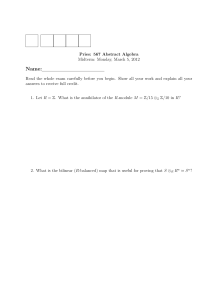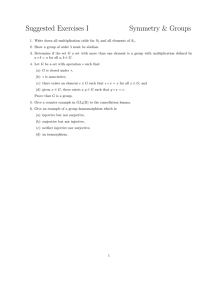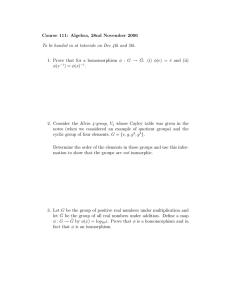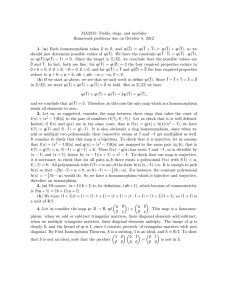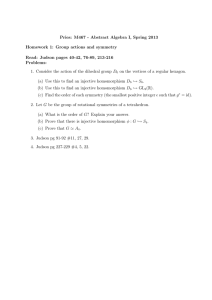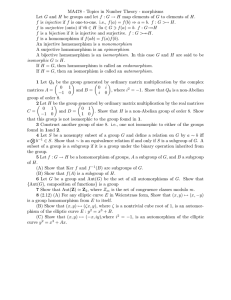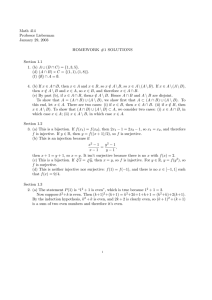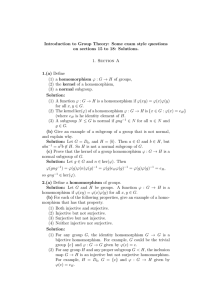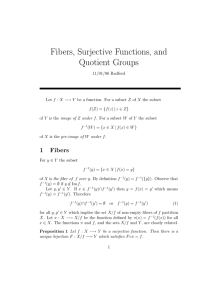Problem session solutions
advertisement
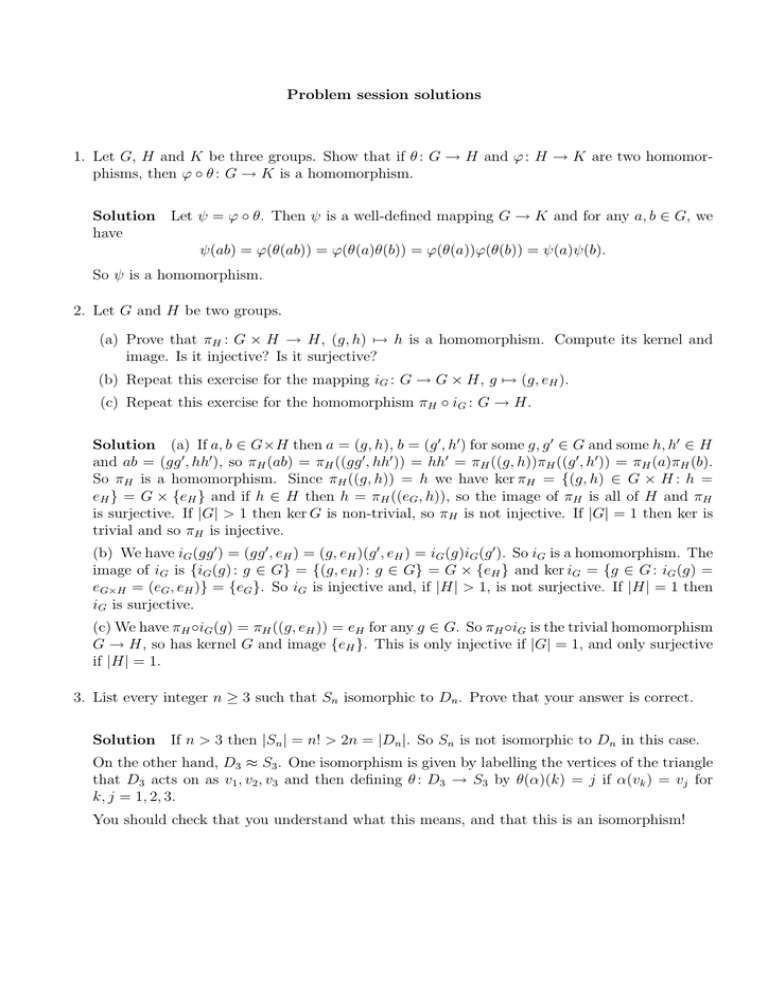
Problem session solutions
1. Let G, H and K be three groups. Show that if θ : G → H and ϕ : H → K are two homomorphisms, then ϕ ◦ θ : G → K is a homomorphism.
Solution Let ψ = ϕ ◦ θ. Then ψ is a well-defined mapping G → K and for any a, b ∈ G, we
have
ψ(ab) = ϕ(θ(ab)) = ϕ(θ(a)θ(b)) = ϕ(θ(a))ϕ(θ(b)) = ψ(a)ψ(b).
So ψ is a homomorphism.
2. Let G and H be two groups.
(a) Prove that πH : G × H → H, (g, h) 7→ h is a homomorphism. Compute its kernel and
image. Is it injective? Is it surjective?
(b) Repeat this exercise for the mapping iG : G → G × H, g 7→ (g, eH ).
(c) Repeat this exercise for the homomorphism πH ◦ iG : G → H.
Solution (a) If a, b ∈ G×H then a = (g, h), b = (g ′ , h′ ) for some g, g ′ ∈ G and some h, h′ ∈ H
and ab = (gg ′ , hh′ ), so πH (ab) = πH ((gg ′ , hh′ )) = hh′ = πH ((g, h))πH ((g ′ , h′ )) = πH (a)πH (b).
So πH is a homomorphism. Since πH ((g, h)) = h we have ker πH = {(g, h) ∈ G × H : h =
eH } = G × {eH } and if h ∈ H then h = πH ((eG , h)), so the image of πH is all of H and πH
is surjective. If |G| > 1 then ker G is non-trivial, so πH is not injective. If |G| = 1 then ker is
trivial and so πH is injective.
(b) We have iG (gg ′ ) = (gg ′ , eH ) = (g, eH )(g ′ , eH ) = iG (g)iG (g ′ ). So iG is a homomorphism. The
image of iG is {iG (g) : g ∈ G} = {(g, eH ) : g ∈ G} = G × {eH } and ker iG = {g ∈ G : iG (g) =
eG×H = (eG , eH )} = {eG }. So iG is injective and, if |H| > 1, is not surjective. If |H| = 1 then
iG is surjective.
(c) We have πH ◦iG (g) = πH ((g, eH )) = eH for any g ∈ G. So πH ◦iG is the trivial homomorphism
G → H, so has kernel G and image {eH }. This is only injective if |G| = 1, and only surjective
if |H| = 1.
3. List every integer n ≥ 3 such that Sn isomorphic to Dn . Prove that your answer is correct.
Solution If n > 3 then |Sn | = n! > 2n = |Dn |. So Sn is not isomorphic to Dn in this case.
On the other hand, D3 ≈ S3 . One isomorphism is given by labelling the vertices of the triangle
that D3 acts on as v1 , v2 , v3 and then defining θ : D3 → S3 by θ(α)(k) = j if α(vk ) = vj for
k, j = 1, 2, 3.
You should check that you understand what this means, and that this is an isomorphism!
